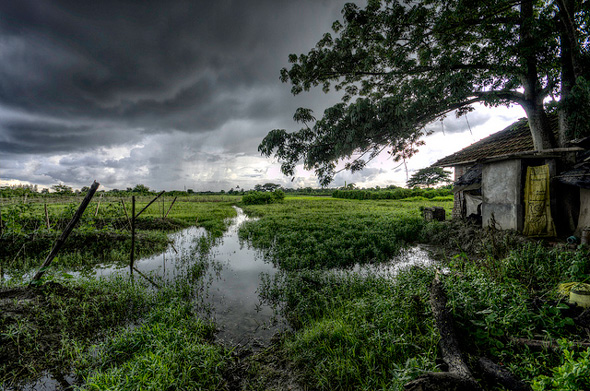-
Christina Larson, Yale Environment 360
Gauging the Impact of Warming On Asia’s Life-Giving Monsoons
August 21, 2012 By Wilson Center Staff
The original version of this article, by Christina Larson, appeared on Yale Environment 360.
Bouncing along bad roads in a jeep through central Mongolia, with bright blue skies and high clouds overhead, we drive for miles through a treeless landscape, passing only dry grasslands dotted with cattle and white yurts. But as we head north – myself, two U.S. scientists, and one Mongolian forestry expert – we begin to notice Siberian pine and larch growing on the northern slopes of rolling hills, but not the southern slopes, and at some elevations, but not others. In water-scarce Mongolia, as my travel companion Neil Pederson of Columbia University’s Lamont-Doherty Earth Observatory explained, the precarious growth of trees is limited by temperature and moisture availability; small variations – northern slopes are slightly cooler and wetter – can make all the difference.
Our destination is a 30-square-kilometer lava field in north central Mongolia, where a volcano oozed magma some 7,000 years ago. The pockmarked black surface looks like a moonscape, with only a few scraggly trees and dry deadwood littering the ground. But this is precisely what has brought Pederson and his colleagues to Mongolia since 1995 — the ability to sample long-lived, slowly decaying trees, some dating back more than 1,300 years. By examining ancient tree rings, Pederson and a research partner at West Virginia University, Amy Hessl, can glean information about historic rainfall patterns, as pines grow more in wet years.
By piecing together this data, Pederson and other scientists from Lamont-Doherty hope to shed light on a vital question: How will climate change affect Asia’s life-sustaining monsoons, which control the seasonal alternation of wet and dry periods over a region home to roughly half the world’s population?Continue reading on Yale Environment 360.
Photo Credit: “Monsoon in Bengal,” courtesy of flickr user Beyond Elements.
Topics: agriculture, Asia, China, climate change, energy, environment, India, Japan, Mongolia, natural resources, population, water
 A Publication of the Stimson Center.
A Publication of the Stimson Center.



